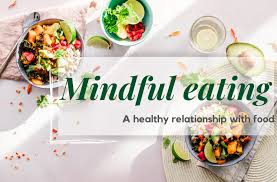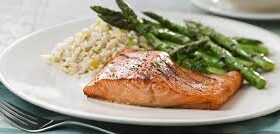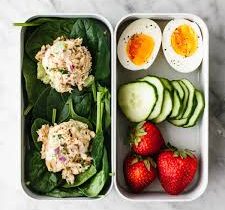Debunking the Myth: Is High-Fructose Corn Syrup Really the Villain? (An In-Depth Investigation)
Raise your hand if you’ve ever reached for a sugary treat, only to be greeted by a demonized ingredient list.
High-fructose corn syrup (HFCS) often takes center stage, branded as the culprit behind obesity, diabetes, and a laundry list of other health woes.
But is this sweet villain truly deserving of its monstrous reputation, or is it simply a victim of sensational headlines and oversimplification?
In this in-depth investigation, we’ll peel back the layers on HFCS, separating fact from fiction.
We’ll dive into its origins, explore its chemical composition, and debunk the most common myths surrounding this ubiquitous sweetener.
Buckle up, sugar detectives, because we’re about to get down and dirty with the science behind the sweet stuff!
The Rise of a Sweet Empire: A Brief History of HFCS
HFCS burst onto the scene in the 1970s, promising a cheaper, sweeter alternative to sucrose (table sugar).
Made by processing cornstarch with enzymes, it quickly became a darling of the food industry, infiltrating everything from sodas and candy bars to salad dressings and ketchup.
Its affordability, shelf stability, and ability to enhance flavors made it an irresistible ingredient, propelling it to the top of the sugar throne.
The Chemical Chameleon: Unpacking HFCS
HFCS isn’t just one type of sugar; it’s a family of sweeteners with varying fructose and glucose ratios.
The most common forms, HFCS 42 and HFCS 55, contain, you guessed it, 42% and 55% fructose, respectively.
This fructose content is often compared to table sugar, which is 50% fructose and 50% glucose.
But here’s the catch: fructose is sweeter than glucose, meaning HFCS can pack more sweetness into a smaller package.
The Sweet Showdown: HFCS vs. Table Sugar
So, is HFCS inherently evil compared to its table sugar counterpart? Not necessarily.
Both sweeteners are broken down by the body in similar ways, and both contribute to calorie intake.
The key difference lies in their metabolic pathways and potential health effects.
The Fructose Factor: Friend or Foe?
Fructose, the major player in HFCS, has been linked to several health concerns, including obesity, insulin resistance, and fatty liver disease.
When consumed in excess, it can bypass normal metabolic pathways, leading to fat accumulation and potentially increasing the risk of these conditions.
However, it’s important to note that these associations are often based on observational studies and large-scale dietary patterns.
Isolating the specific effects of HFCS from other dietary factors and lifestyle choices is a complex challenge.
The Sugar Spectrum: Beyond the Binary
Democratizing the sugar battleground, it’s crucial to remember that all sugars, including table sugar and natural sweeteners like honey and agave, can contribute to health issues if consumed in excess.
The key lies in moderation and overall dietary patterns.
A balanced diet rich in whole foods, fruits, vegetables, and lean protein is far more important than obsessing over specific types of sugars.
Beyond the Hype: Separating Fact from Fiction
Now that we’ve peeled back some layers, let’s address the elephants in the pantry – the most common myths surrounding HFCS:
Myth #1: HFCS is a chemical Frankenstein: While the production process involves enzymes, the resulting HFCS molecule is no Frankenstein’s monster. It’s a simple sugar molecule, similar to fructose found in fruits.
Myth #2: HFCS is more addictive than other sugars: This claim lacks solid scientific evidence. Sugar, in any form, can trigger the reward system in the brain, potentially leading to cravings. However, attributing addiction specifically to HFCS is more of a sensationalized notion than a proven fact.
Myth #3: HFCS is banned in other countries: While some countries have specific regulations on HFCS labeling or use in certain products, it’s not universally banned anywhere. The myth likely stems from confusion with taxes or restrictions on sugary beverages implemented in some countries.
The Verdict: Friend, Foe, or Somewhere in Between?
So, where do we stand with HFCS? It’s not an inherently evil villain, but it’s not a health halo either.
It’s a sweetener with its own set of pros and cons, just like any other food we consume.
The key takeaway is to approach it with awareness and moderation.
Navigating the Sugar Seas: Tips for a Sweet Life
Here are some practical tips for navigating the sugar maze:
- Read labels: Be mindful of added sugars in processed foods
-
- Choose whole foods: Prioritize fruits, vegetables, and whole grains for natural sweetness and essential nutrients.
- Cook more at home: This gives you control over ingredients and portion sizes, allowing you to manage sugar intake.
- Experiment with natural sweeteners: Use moderate amounts of honey, maple syrup, or stevia for occasional sweet treats.
- Focus on overall diet: Don’t demonize specific ingredients; prioritize a balanced diet rich in healthy whole foods.
Listen to your body: Pay attention to your hunger and fullness cues to avoid overconsumption of anything, even sweet treats.
FAQs:
Is HFCS worse than table sugar?
There’s no definitive answer to “worse,” as both sweeteners contribute to calorie intake and have similar metabolic pathways. While some studies suggest fructose in HFCS may have specific health concerns, focusing on overall dietary patterns and moderation is more important than demonizing specific sugars.
Should I eliminate HFCS completely from my diet?
There’s no need for drastic elimination unless you have specific health concerns or dietary restrictions. Awareness and moderation are key. Prioritize whole foods, limit processed foods with added sugars, and enjoy occasional sweet treats mindfully.
Are there healthier alternatives to HFCS?
Natural sweeteners like honey or maple syrup offer alternatives, but they also contain sugars and should be consumed in moderation. The healthiest approach is to prioritize whole foods as your primary source of sweetness and use any sweetener, natural or not, thoughtfully.
How can I reduce my sugar intake overall?
Read labels, cook more at home, be mindful of portion sizes, choose whole foods over processed options, and focus on building a balanced diet rich in fruits, vegetables, and whole grains. Remember, small changes add up over time, so celebrate every step towards a healthier relationship with sugar.
Where can I find more information about healthy eating and sugar intake?
Numerous credible sources offer valuable information. Check out resources from the American Heart Association, the Academy of Nutrition and Dietetics, and the Harvard School of Public Health for research-based guidance on healthy eating and sugar consumption.
By understanding the truth behind HFCS and approaching sugar with awareness and moderation, we can navigate the sweet seas of life with a balanced and mindful perspective.
Remember, a healthy relationship with food, beyond the sugar divide, is the real recipe for a happy and fulfilling life.
This concludes our in-depth investigation into the world of High-Fructose Corn Syrup.
We hope it provided you with valuable information and helped debunk some myths surrounding this often demonized ingredient.
Now, go forth and conquer the sugar seas with mindful choices and a sweet, balanced perspective!
Reference Links for “Debunking the Myth: Is High-Fructose Corn Syrup Really the Villain?”:
General Information:
- High-Fructose Corn Syrup (HFCS): https://en.wikipedia.org/wiki/High-fructose_corn_syrup
- Fructose and Health: https://www.ncbi.nlm.nih.gov/books/NBK576428/
- Added Sugars and Health: https://health.gov/our-work/nutrition-physical-activity/dietary-guidelines/previous-dietary-guidelines/2015
Debunking Myths:
- HFCS: Chemical Frankenstein?: https://www.skepticalraptor.com/skepticalraptorblog.php/high-fructose-corn-syrup-debunking-the-myths-with-science-and-facts/
- HFCS Addiction Myth: https://www.health.harvard.edu/staying-healthy/which-is-better-high-fructose-corn-syrup-or-table-sugar
- Global HFCS Regulations: https://www.attn.com/stories/15036/chemicals-american-foods-illegal-europe
Healthy Eating Resources:
- American Heart Association: https://www.heart.org/
- Academy of Nutrition and Dietetics: https://www.eatright.org/
- Harvard School of Public Health: https://www.hsph.harvard.edu/nutrition/
Additional Resources:
- Interactive Sugar Science: https://sugarscience.ucsf.edu/welcome-to-sugarscience.html
- Sweet Talk: A Guide to Sweeteners: https://www.sustainablenourishment.com/glycemic-index-glycemic-load-100-foods-harvard-health/















Leave a Reply